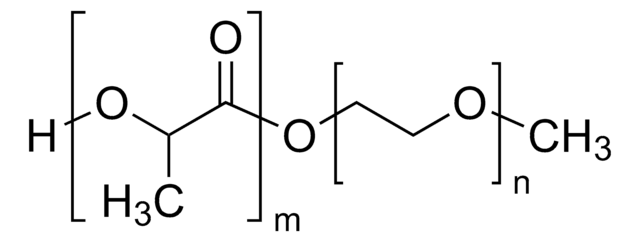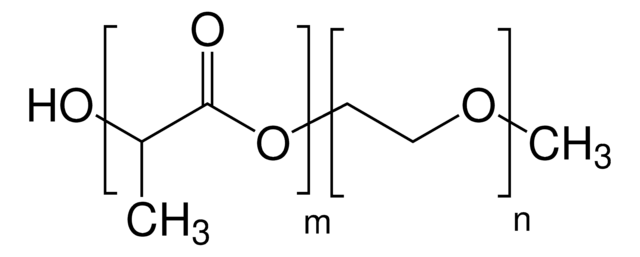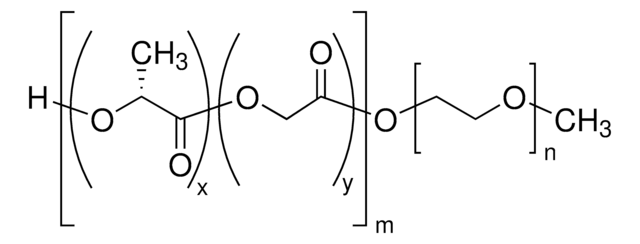918946
Poly(ethylene glycol) methyl ether-block-poly(D,L lactide)
PEG average Mn 5000, PDLLA average Mn 20000
Synonym(s):
Biodegradable, Block copolymer, Drug delivery, PEG-PLA, PLLA, mPEG-PLA, mPEG-PLLA
About This Item
Recommended Products
form
powder or chunks
Quality Level
mol wt
PDLA average Mn 20,000 (by NMR)
PDLLA average Mn 20000
PEG average Mn 5,000 (by NMR)
PEG average Mn 5000
color
white to beige
storage temp.
2-8°C
Looking for similar products? Visit Product Comparison Guide
Application
Storage Class Code
11 - Combustible Solids
WGK
WGK 3
Regulatory Listings
Regulatory Listings are mainly provided for chemical products. Only limited information can be provided here for non-chemical products. No entry means none of the components are listed. It is the user’s obligation to ensure the safe and legal use of the product.
JAN Code
918946-500MG:
918946-500G:
918946-VAR:
918946-BULK:
Choose from one of the most recent versions:
Certificates of Analysis (COA)
Don't see the Right Version?
If you require a particular version, you can look up a specific certificate by the Lot or Batch number.
Already Own This Product?
Find documentation for the products that you have recently purchased in the Document Library.
Our team of scientists has experience in all areas of research including Life Science, Material Science, Chemical Synthesis, Chromatography, Analytical and many others.
Contact Technical Service








